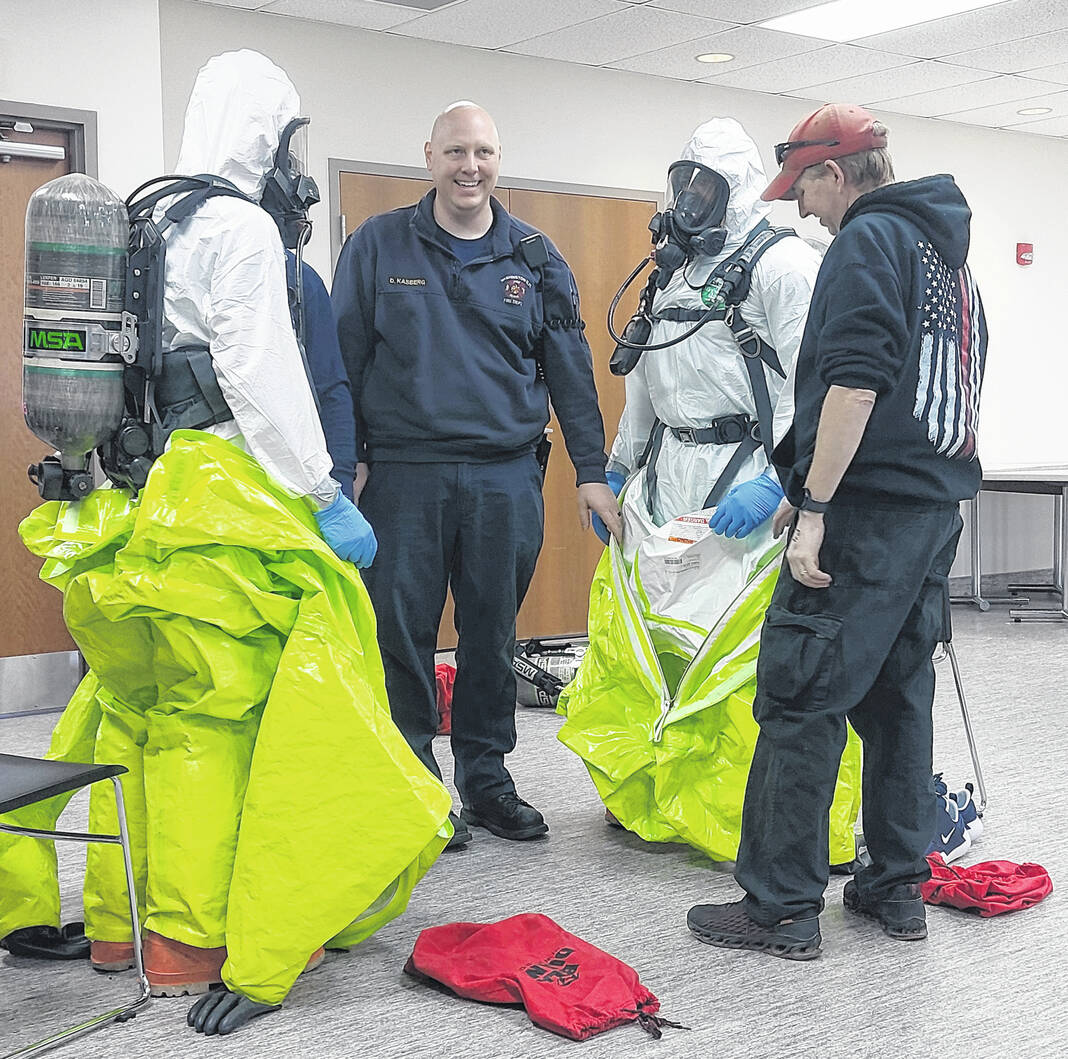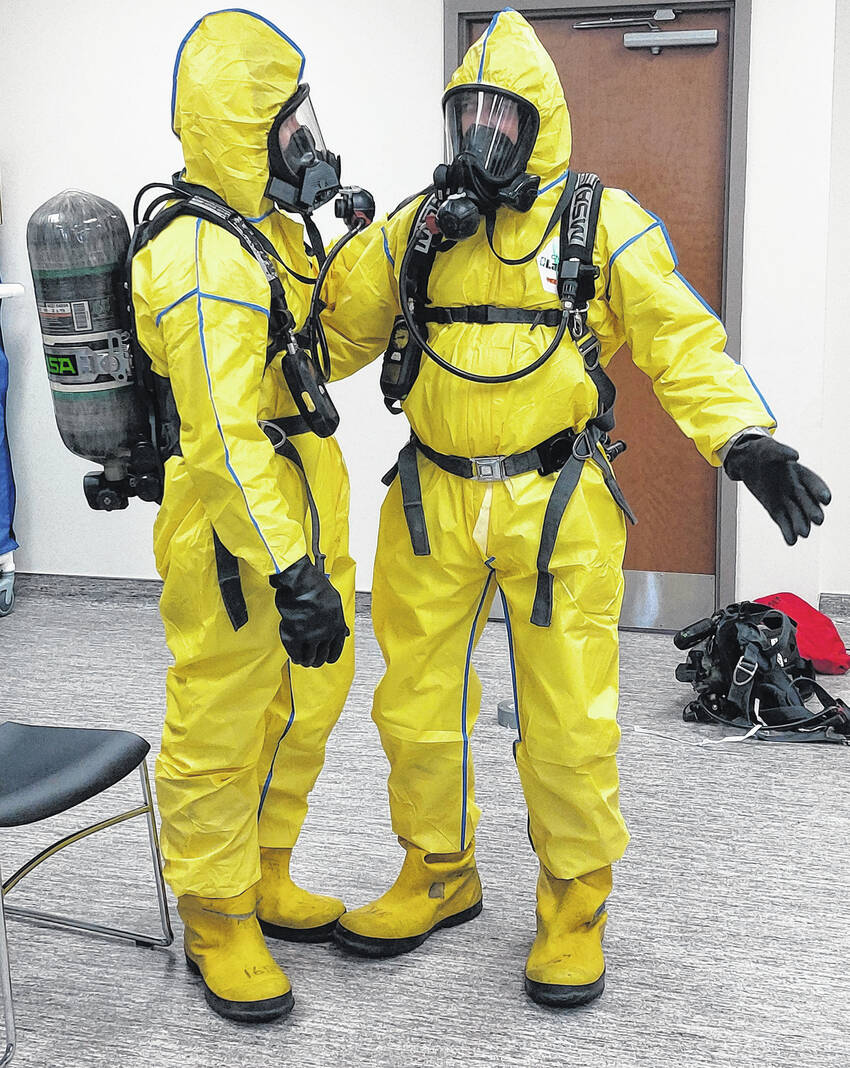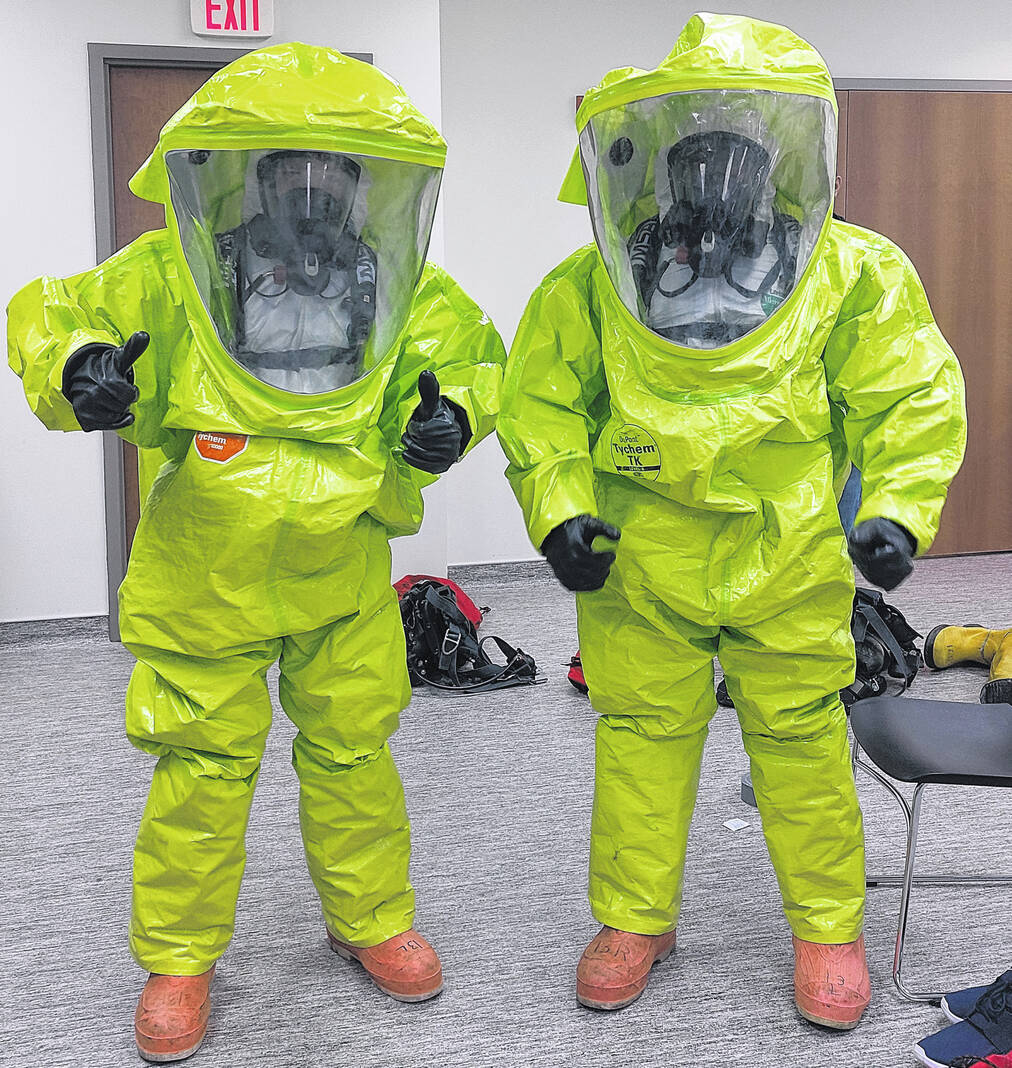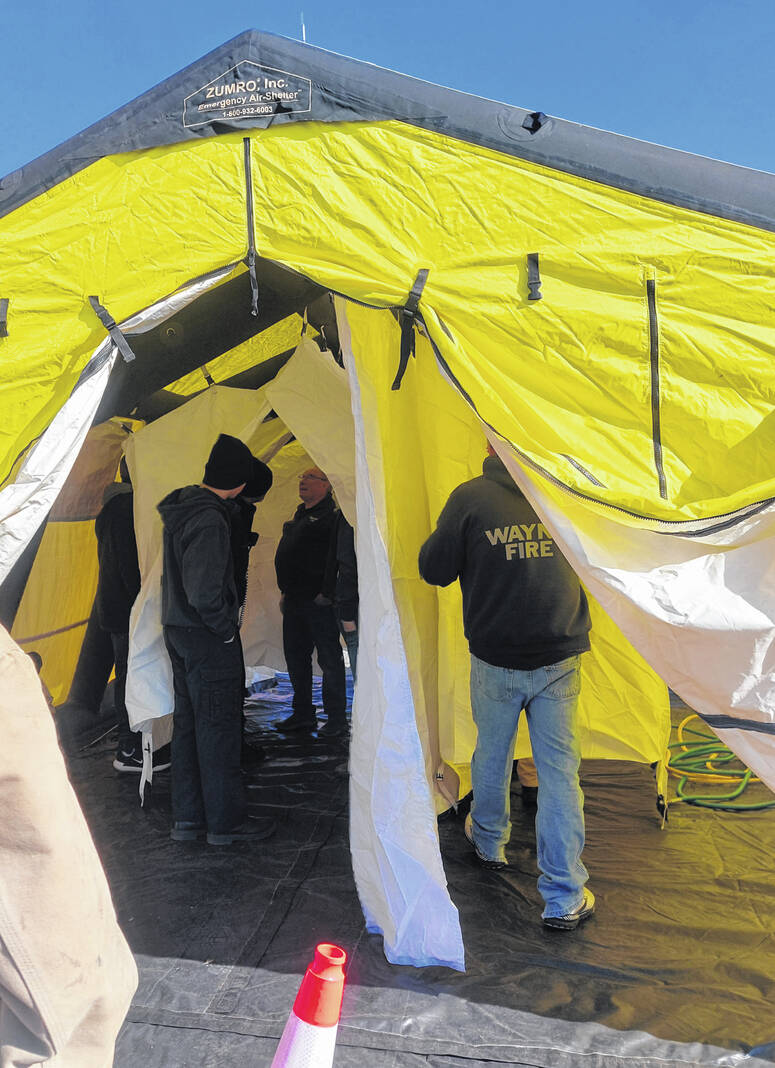
Firefighters were trained in suiting up in the Level C and A Hazmat suits with air tanks, assisted by volunteer helpers going through the glove and boot safety taping, suit adjustments and putting on air tanks.
Photos by Gail Allen

Firefighters Tyler Ozborne and Stefan Elrich were fully outfitted for entry into a hazardous incident.

Firefighter Brandonn Arnold and Cadet Trainee Eyan Taulbee were trained in dressing in the white Tyvek safety suit, gloves and boots, putting on air tanks, then getting into the Level A suit, the highest level of protection in any type of hazardous material incident.

The decontamination tent was set up outside of the hospital to show all firefighters the procedures used to decontaminate anyone involved in a hazardous material event.
WASHINGTON COURT HOUSE — The Fayette County Emergency Management Agency (EMA) recently held an annual Hazmat training session for all local firefighters at the Adena Fayette Medical Center Building 2.
The University of Findlay training officers for this class were instructor Rick Hoffman and Jason Distel, instructional technician. The EMA received a grant to pay for the training.
The Hazardous Material Technician and Operation Training course deals with Hazmat chemical spills. The refresher course is required for maintaining certification. The 2020 Emergency Response Guide Book is the reference they use to know how to deal with each incident. Firefighters review placards and use their training notebooks as necessary for the correct response and safety of all people involved.
After the classroom training session, the practical training began by learning the “dress-out” procedures for personal protection in various levels of gear. The first level of gear (Level D) is the regular firefighter wear, which is worn to every fire incident.
The next level (Level C) is the disposable Tyvek white safety suit which prevents different types of fluids and chemicals from making skin contact, such as pesticides, fertilizers, blood, grease and more.
The third level (Level B) is to protect against liquid splashes and must be used with an air tank worn on their back with the Tyvek white suit as the first layer over their clothing.
The fourth level (Level A) is like a moon-suit for the prevention of not just liquid splashes, but also for vapor safety.
It is important for total safety to be slow and careful getting into these suits, using a partner for duct taping gloves around the wrists and plastic covers over the boots to prevent any leakage or spills getting inside.
EMA Director Melissa Havens said, “It is not like rushing into a fire, there are careful preparations in suiting up and dealing with chemical hazards.”
After the feet are covered, the white Tyvek suit is raised to the waist, two sets of rubber gloves are put on and each taped around the wrist, then special Hazmat boots are put on, then the suit is pulled up and zipped to cover the body. A face mask is then put on. If an air tank is needed, depending on the level of safety, it is then put on and attached to the face mask.
During the final attachment of the breathing apparatus, the “dress-out” partner or safety officer must accurately document the time the air tank was turned on in order to calculate the air supply properly, usually 45 minutes per tank. The firefighter or Hazmat responder must be able to reach the decontamination station after his exposure to an incident with enough air supply left in the tank to sustain him/her.
The Level A moon-suit type is reusable after decontamination because each costs approximately $1,100 each. The Tyvek white suit is worn underneath the neon suit and the air tank is placed on the white suit to be covered safely with the outer safety suit.
If Fayette County were to have a Hazmat situation or spill, a farmer, for example, might drive himself to the hospital for treatment. However, prior to entering the hospital the fire crew would need to set up the Adena Fayette Zumro Inc. Decon Tent, better known as a decontamination tent outside the hospital entrance. There are water line hookups on the side wall of the hospital building for that purpose. The tent is inflated via an air pump, a water hose is attached, and each firefighter or person involved in an incident must be completely decontaminated before treatment to an exposure.
There are two sides to the tent, one men’s, one women’s, (or if no women, it can be two men) and three sections on each side. The first is for disrobing of all clothing, placed into a trash barrel provided. The second section, divided by plastic sheeting, is for the shower. The third and final section is to redress and go into the hospital if treatment is needed for exposure. The plastic sheeting sections used inside the tent are adjustable depending on the decontamination situation. There are protected outlets on one side of the tent for special heaters to provide warmth in case of cold or bad weather.
Approximately 20-25 firefighters combined from the Washington Fire Department, Wayne Township Fire, Concord Green Fire, Jeffersonville Fire and the New Holland Fire Department were all present at this annual training session receiving their re-certification and showing their dedication in protecting and serving the community with updated skills.

